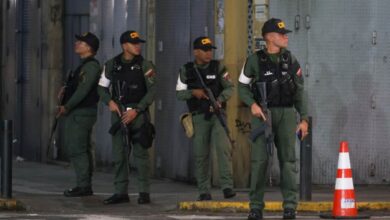What is the origin of Avianca’s dangerous crisis?
Listen this article
The airline reports millions of losses and accumulates considerable debt, where did these problems come from and where would they take them?

When Bolivian entrepreneur Germán Efromovich acquired Avianca, the second oldest airline in the world, in 2004, it was in crisis. It had a small and outdated fleet, unable to compete with the large airlines in Latin America. Despite this, Efromovich's leadership led Avianca to become the second largest airline in the region.
Leer en español: ¿A qué se debe la peligrosa crisis de Avianca?
However, according to a Bloomberg report, it was the same leadership of Eframovich that led the airline to the new crisis that it faces nowadays.
According to the Simple Flying portal, Avianca reported losses of $ 68 million dollars during the first quarter of 2019. Bad news for the airline, no doubt, but nothing new in the world of aviation. The British airline EasyJet reported even worse losses during the same quarter, of almost $ 350 million dollars.
Also read: How much will it cost to Boeing suspending its 737 MAX?
In addition to the quarterly losses, Avianca is in trouble trying to refinance a debt of more than $ 550 million dollars. For the rating agency Standard & Poor's, Avianca has already taken too long and reduced its credit rating from B to CCC +, in addition to reducing the rating of the airline's frequent flyer program, called LifeMiles, from B to BB-. The deadline that Avianca has imposed to assume its debt commitments is May 2020.
"All of the airline's ratings were placed under CreditWatch with negative implications," the S & P statement said. "If the demand deteriorates or the financial markets weaken, we consider that Avianca will face difficulties when it comes to securing new sources of financing."
Efromovich's debt
The bulk of the debt that afflicts Avianca's financiers was acquired last year by Efromovich, who offered his 51.5% stake in the company as collateral for a loan from United Continental Holdings, to which the United airline belongs. However, according to Bloomberg, shortly after acquiring the loan, Avianca would have violated the terms of the agreement on which it was built, which could give United arguments to finalize the acquisition of Avianca through the participation of Efromovich.
United has already stated that it does not intend to take Avianca's shares for the time being. Likewise, the mere possibility of such a scenario becoming a reality brings problems for Avianca, as it raises doubts for potential lenders, hindering their ability to obtain new financing.
In addition, should the acquisition occur, Avianca would be forced to obtain more than $ 1,500 million dollars to reimburse its lenders. According to Corredores Davivienda, this figure is almost four times higher than the cash reserves reported by the airline in its balance sheet for 2018.
Where do Avianca's problems come from?
For Avianca, the acquisition of debts is just normal, they needed liquidity to be able to stay afloat in a stormy commercial landscape. What is more surprising is their inability to refinance it, because by reporting quarterly losses of these proportions, they will not be able to comply with existing commitments without assuming new ones with other lenders.
Due to the great generation of losses of Avianca is that there has been an unfavorable exchange rate. Fuel, airport fees, boat spares, and new vessels are all acquired in dollars, while the money that Avianca collects from its customers mainly comes in other currencies, considerably weaker and in the process of weakening further. This generates a considerable imbalance between the income and the expenses of the company due to the exchange rate.
In addition, another problem that Avianca faces is a highly heterogeneous fleet. For an airline, it is profitable to operate a fleet with as few different types of plains as possible. Each different model within the same fleet represents a new training program for pilots and mechanics, a new inventory of spare parts, new adaptations for the facilities and even a new safety video for passengers. This means that the fewer types of airplanes are in service, the less will be the costs of adjustments and maintenance. Avianca has 11 different types of plains, too much variety for a fleet of just 110.
LatinAmerican Post | Pedro Bernal
Translated from "¿A qué se debe la peligrosa crisis de Avianca?"





